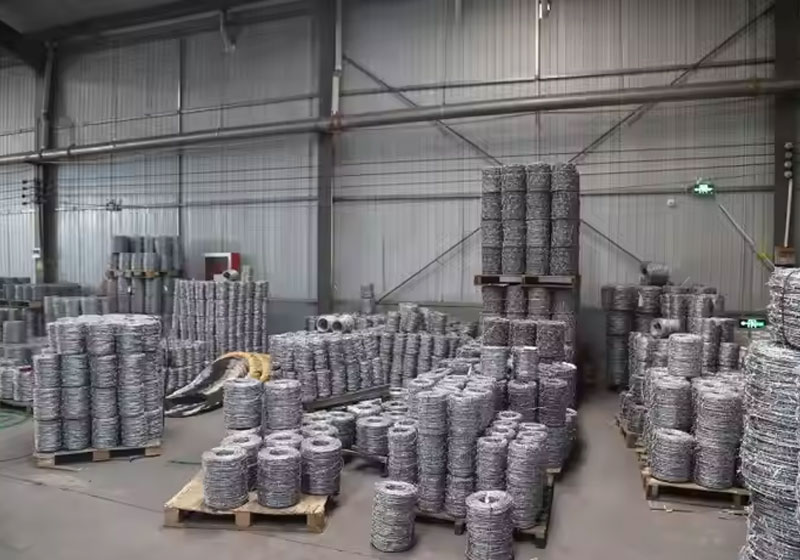Ordinary galvanized barbed wire and high-zinc galvanized barbed wire are two common types of metal barbed wire. Their main differences lie in the thickness of the zinc coating and corrosion resistance, which also lead to variations in their applications. The following is an analysis and comparison of their core uses:
Ordinary galvanized barbed wire usually adopts ordinary galvanization processes (such as electro-galvanization or light hot-dip galvanization), with a relatively thin zinc coating (generally 30-60g/m² in thickness).
Short-term protection needs: Suitable for dry, low-rainfall, and low-corrosion environments, such as inland areas, rural farmland, and fences of ordinary industrial parks.
Temporary isolation facilities: Short-term projects like construction site enclosures and temporary isolation zones.
Low-cost protection scenarios: Projects with limited budgets and low requirements for long-term rust prevention, such as fences for simple warehouses and breeding farms.
Thin zinc coating, prone to rusting when exposed to humid or salt-spray environments for a long time;
Short service life (generally 3-5 years).
High-zinc galvanized barbed wire usually uses the hot-dip galvanization process, with a much thicker zinc coating (zinc coating thickness ≥200g/m²). It may even adopt "high-heat zinc" or "extra-high zinc" processes, resulting in a significant improvement in corrosion resistance.
Protection in high-corrosion environments: Coastal areas, saline-alkali land, areas around chemical plants, and rainy/humid regions.
Long-term safety protection needs: High-security places such as prisons, military restricted zones, airports, oil depots, and nuclear power plants.
Isolation nets for highways/railways: Scenarios that are exposed to the outdoors for a long time and need to withstand erosion from rain and sand.
International standard projects: Compliant with international galvanization standards such as ISO and ASTM, used for export projects or high-standard engineering.
Strong rust resistance and long service life (over 10 years);
Low maintenance cost, suitable for long-term use;
Adaptable to extreme climates and industrial environments.
Dry inland areas: Ordinary galvanized barbed wire can meet the needs;
Coastal areas, industrial zones, and rainy areas: High-zinc galvanized barbed wire must be selected.
Short-term or low-cost projects: Ordinary galvanized barbed wire;
Long-term projects or projects with high security requirements: Prioritize high-zinc galvanized barbed wire to reduce later replacement costs.
Some countries or industries (such as power facilities and border defense projects) mandate the use of high-zinc galvanized barbed wire, so relevant standards must be confirmed in advance.
Both types of barbed wire can be used in combination with razor wire to form composite protective nets, which further enhance anti-climbing capabilities. They are suitable for ultra-high-security places such as prisons and military bases.
By reasonably selecting the type of galvanization, an optimal balance between cost and performance can be achieved. For longer-term protection, "galvanized + PVC-coated" barbed wire can also be chosen to further improve weather resistance.


 WhatsApp
WhatsApp